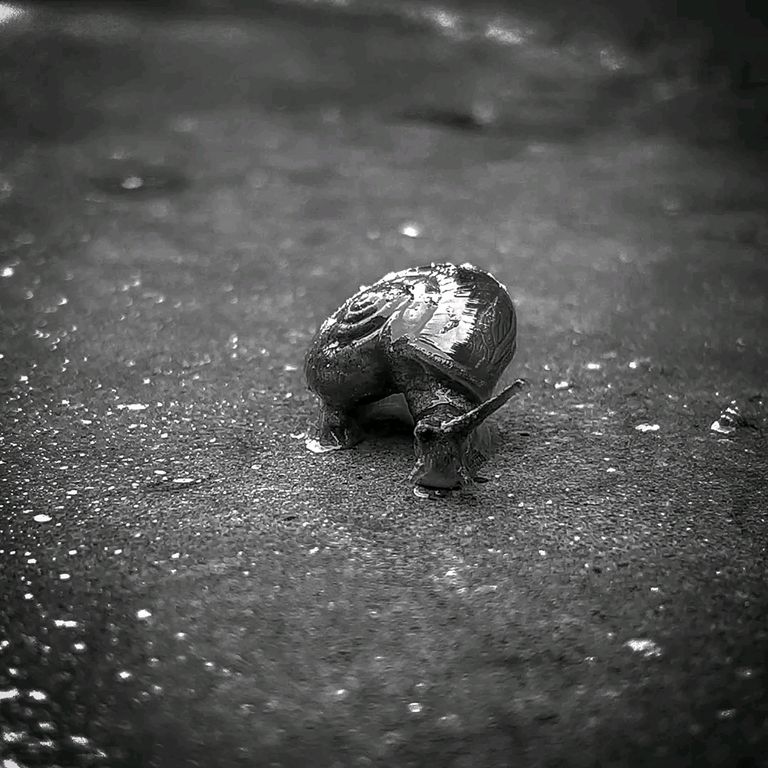Hello #BLURT Family. How are you all?
The snail is the common name for the soft-bodied animal of the Gastropoda class of the Mollusca period. They have one or two pairs of antlers; Head clear, legs wide. Their bodies are covered with a spiral shell. Rarely is the shell missing. Thousands of species in this episode inhabit land, sea or freshwater. The mantle cavity of many snails of the pulmonate class is rich in blood vessels and acts like a lung. Snails that live on the ground have two pairs of tusks on their heads, which can be rolled up if necessary. Stylommatophora is at the apex of the posterior pair of cultivars. Aquatic patmonites have a pair of cultivars on their heads that cannot be folded, and eyes are at the base of the cultivars (Basommatophora).
According to fossil data, gastropods first appeared in the Cambrian period, about 600 million years ago. But we do not know the duration of the spread of gastropods in this region. The shell size of snail shells is limitless; Length can be from 1 mm to 360 mm. Of the approximately 50,000 species of snails recorded on earth so far, 22,000 are terrestrial, 23,000 are marine, and 5,000 are freshwater. Bangladesh has sub-tropical monsoon climate and rich vegetation, natural rivers and streams, wetlands, closed lakes and about 460 km long coastline in the southern part of the countryAdds.However, there is no complete list of snails in Bangladesh. According to one estimate, 212 species of sea snails of about 40 genera have been identified in the coastal areas of Bangladesh.

There are 24 species of land birds in Bangladesh (Cyclophoridae 3, Exotic Achatinadae 1, Enidae 1, Ariophantidae 2, Glessulidae 1, Zonitidae 16) and 60 species of aquatic / freshwater (Neritidae 5, Viviparidae 6, Pilidae 5, Bitidae 5, Hydrobidae 22, Lymnaeidae 10, Ancylidae 1, Planorbidae11) Snails have been recorded.It is estimated that there are more than 300 species of snails in Bangladesh. The terrestrial snails Cyclophorus auranticus and C. aurora are found only in the evergreen hill forests of Sylhet. Snails eat the semi-rotten leaves of the tree and remain active day and night after the rainy season. Snails play an important role in converting living things into soil.
All terrestrial snails hibernate during the dry season. Land snails Macrochlamys indica and M. sequax cause extensive damage to vegetables throughout the country. Recently, terrestrial snails have been causing severe damage to mulberry trees in the northern part of Bangladesh. Scientist Benson brought a large terrestrial snail Achatina fulica from Mauritius in 1848 and released it in the garden of the Royal Asiatic Society in Calcutta. These snails have spread to almost all the districts of Bangladesh except Mymensingh, Sherpur, Jamalpur, Kishoreganj and Maulvi Bazar districts. Snails cause severe damage to everything from vegetables to grains, trees and ornamental plants. In the West A. fulica snails are a delicacy rich in protein. Some of the tribal communities in Bangladesh eat freshwater Bellamya bengalensis and Pila globosa snails. b. bengalensis and P. globosa snails Clarias gariepinus imported from abroad are being used as a supplementary food for catfish and domesticated ducks. Recently, P. globosa snails have been cut into pieces and fed to Macrobrachium rosenbergii and Penaeus monodon.
b. The species bengalensis, P. globosa, Lymnaea luteola, L. acuminata, L.stagnalis, Indoplanorbis exustus and Gyrulus convexiusculus are larvae of the parasitic trematod, harmful to humans, domestic animals and birds. The shells of most marine snails come in a variety of colors and are very nice to look at. They are widely used as bracelets, necklaces, bracelets, key rings and canopies, horns or turbinella pyrum, cameo carvings, curios and pearls.
